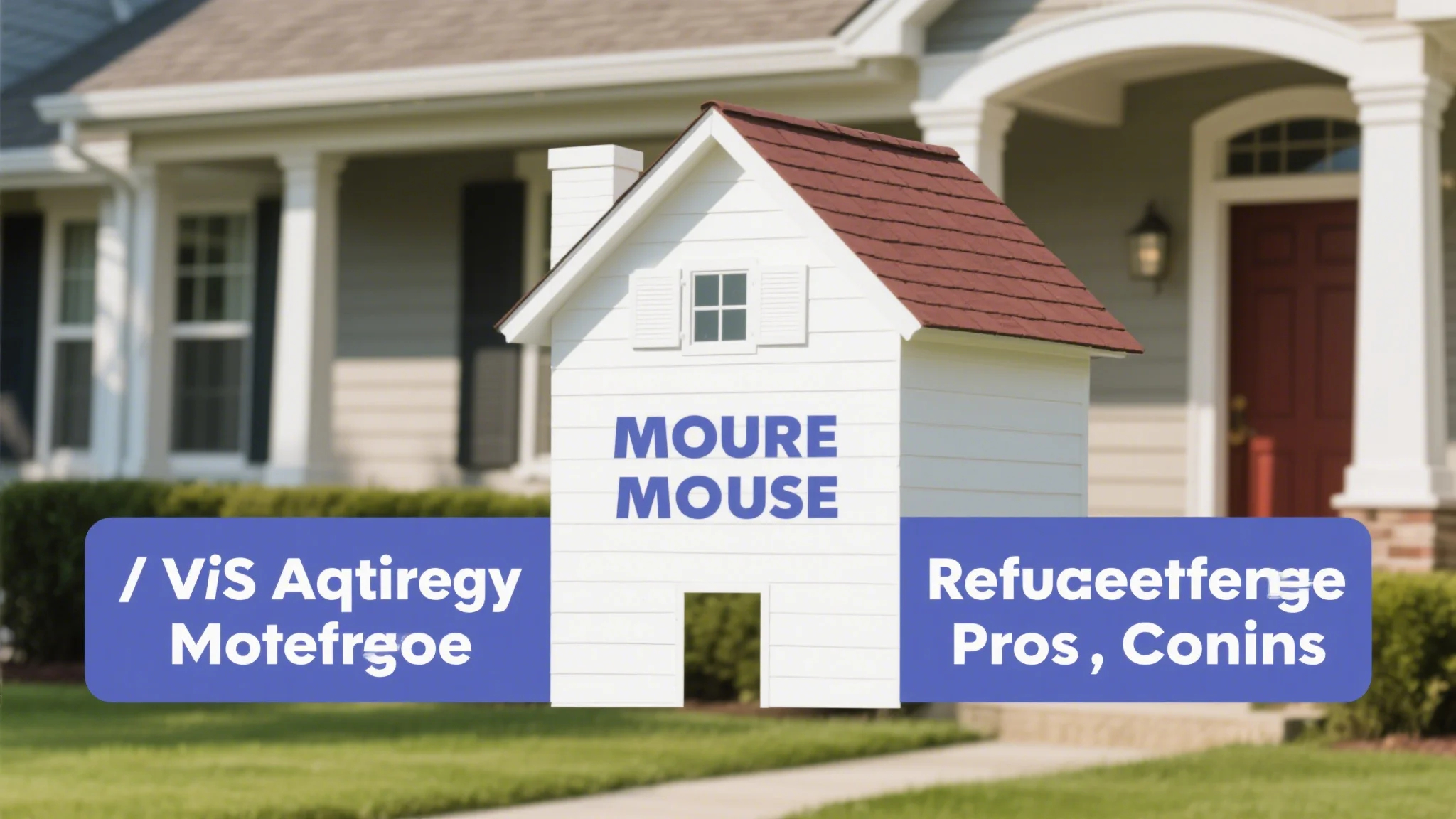When it comes to refinancing your mortgage, choosing between a fixed-rate and adjustable-rate mortgage can be a daunting decision. Both options have their unique benefits and drawbacks, and the right choice depends on your financial goals, risk tolerance, and long-term plans. In this article, we’ll break down the pros and cons of fixed vs adjustable mortgage refinances to help you make an informed decision.

When considering a mortgage refinance, one of the most critical decisions you’ll face is whether to choose a fixed-rate or adjustable-rate mortgage (ARM). Each option has its own set of advantages and disadvantages, and the best choice for you depends on your financial situation, goals, and how long you plan to stay in your home.
What Is a Fixed-Rate Mortgage Refinance?
A fixed-rate mortgage is a loan with an interest rate that remains constant throughout the life of the loan. This means your monthly mortgage payments will stay the same, regardless of market fluctuations. Fixed-rate mortgages are typically available in terms ranging from 10 to 30 years, with the most common being 30-year fixed-rate mortgages.
Pros of a Fixed-Rate Mortgage Refinance
Predictable Payments: One of the biggest advantages of a fixed-rate mortgage is the stability it offers. Since the interest rate doesn’t change, your monthly mortgage payments remain the same, making it easier to budget for the long term.
Protection Against Rising Rates: If you believe interest rates are likely to rise in the future, a fixed-rate mortgage can protect you from paying more on your loan.
Long-Term Financial Planning: With a fixed-rate mortgage, you can plan for your financial future with greater certainty, knowing your payments won’t increase unexpectedly.
Equity Building: Fixed-rate mortgages often have lower overall interest rates compared to adjustable-rate options, which can help you build equity in your home more quickly.
Cons of a Fixed-Rate Mortgage Refinance
Higher Initial Rates: Fixed-rate mortgages typically have higher interest rates than adjustable-rate mortgages, especially in the short term. This means your monthly payments could be higher initially.
Lack of Flexibility: If you plan to sell your home in the near future, a fixed-rate mortgage might not be the best option. You’ll likely pay a higher rate upfront without the opportunity to benefit from potential rate decreases.
Missed Opportunities: If interest rates drop significantly after you refinance, you won’t be able to take advantage of lower rates with a fixed-rate mortgage.
What Is an Adjustable-Rate Mortgage Refinance?
An adjustable-rate mortgage (ARM) is a loan with an interest rate that changes over time based on market conditions. ARMs typically start with a lower interest rate than fixed-rate mortgages, but the rate can adjust periodically—often every 1, 3, 5, or 7 years.
Pros of an Adjustable-Rate Mortgage Refinance
Lower Initial Rates: One of the biggest advantages of an ARM is the lower initial interest rate, which can result in lower monthly payments right after refinancing.
Potential for Savings: If interest rates decrease over time, your monthly payments could go down, potentially saving you money in the long run.
Flexibility: ARMs offer more flexibility if you plan to sell your home in the near future or if you anticipate a change in your financial situation.
Ideal for Short-Term Plans: If you don’t plan to stay in your home for the long term, an ARM can be a cost-effective option, especially if you plan to sell before the rate adjusts.
Cons of an Adjustable-Rate Mortgage Refinance
Uncertain Payments: The biggest drawback of an ARM is the uncertainty it introduces into your budget. If interest rates rise, your monthly payments could increase significantly.
Higher Risk: ARMs carry more risk because you’re exposed to market fluctuations. If rates rise, your payments could become unaffordable.
Complexity: ARM terms can be complex, with caps on how much the rate can adjust and rules about how often it can change. It’s important to understand these terms to avoid surprises.
Caps on Savings: While ARMs offer the potential for lower rates, there are often caps on how much your rate can decrease, which limits the amount of savings you could realize.
Choosing Between Fixed and Adjustable Rate Refinances
The decision to refinance with a fixed-rate or adjustable-rate mortgage depends on several factors:
How Long You Plan to Stay: If you plan to stay in your home for the long term, a fixed-rate mortgage might be the safer choice.
Your Risk Tolerance: If you’re comfortable with the uncertainty of fluctuating rates, an ARM could be a cost-effective option.
Current Interest Rates: If rates are historically low, a fixed-rate mortgage might be more attractive. If rates are high, an ARM could be a way to secure a lower initial rate.
Financial Goals: If your goal is to minimize your monthly payments in the short term, an ARM might be the way to go. If you prioritize long-term stability, a fixed-rate mortgage is likely better.
In the next part, we’ll dive deeper into how to determine which option is right for you, as well as tips for navigating the refinancing process.
When deciding between a fixed-rate and adjustable-rate mortgage refinance, it’s essential to evaluate your financial situation, goals, and risk tolerance. Here’s a closer look at how to make the best choice for your needs.
Evaluating Your Financial Situation
Before making a decision, assess your current financial health. Consider factors like your income stability, savings, and how much risk you’re willing to take on. If you have a stable job and can handle unexpected increases in your mortgage payments, an ARM might be feasible. However, if your income is variable or you prefer predictable expenses, a fixed-rate mortgage might be more suitable.
Considering Market Conditions
The state of the housing market and interest rates can also influence your decision. If you believe interest rates are likely to rise, a fixed-rate mortgage can protect you from paying more over time. On the other hand, if you think rates will fall, an ARM could allow you to benefit from lower payments.
Weighing Long-Term vs Short-Term Goals
If you’re planning to stay in your home for the next 10 to 30 years, a fixed-rate mortgage offers stability and peace of mind. However, if you anticipate moving within the next 5 to 7 years, an ARM could be a more cost-effective option, especially if you plan to sell before the rate adjusts.
Exploring ARM Features
If you’re leaning toward an adjustable-rate mortgage, take the time to understand its features. ARMs typically have a period of stability—known as the introductory period—before the rate begins to adjust. After that, the rate will adjust based on a specific index and margin. Look for caps on how much the rate can increase or decrease, as these can provide some protection against extreme fluctuations.




